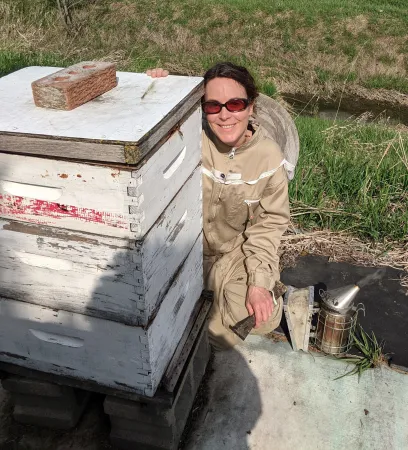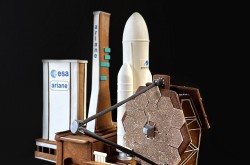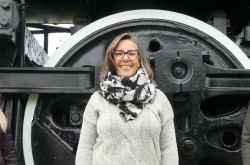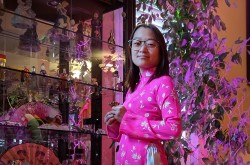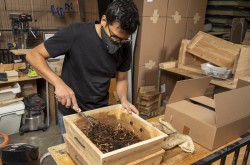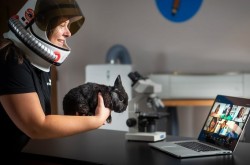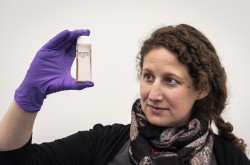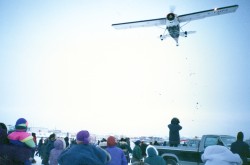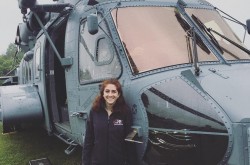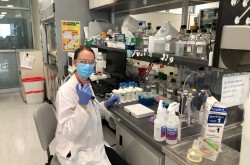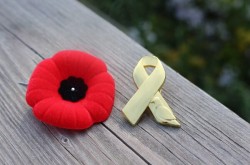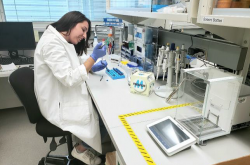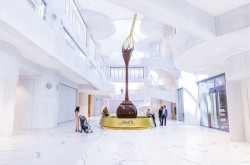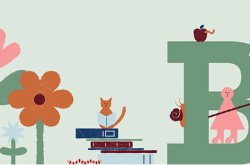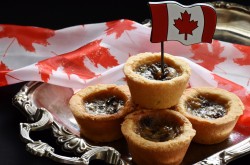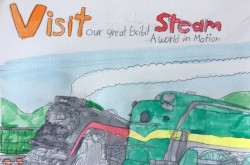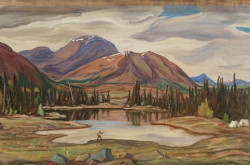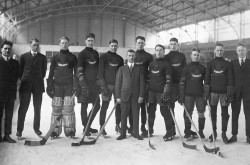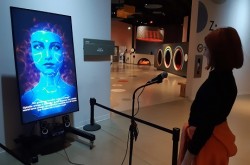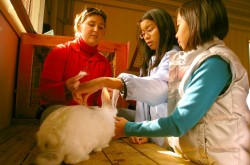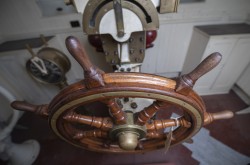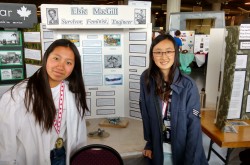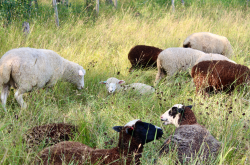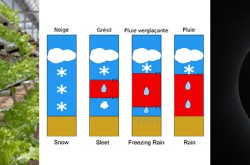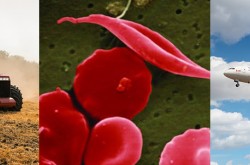Behind the scenes: Meet a beekeeper at the Canada Agriculture and Food Museum

Nadine Dagenais Dessaint is the head beekeeper at the Canada Agriculture and Food Museum, which is home to an observation beehive. Dagenais Dessaint also manages honeybees on her home property, and sells her own honey locally. The Ingenium Channel sat down with Dagenais Dessaint to get the buzz on beekeeping.
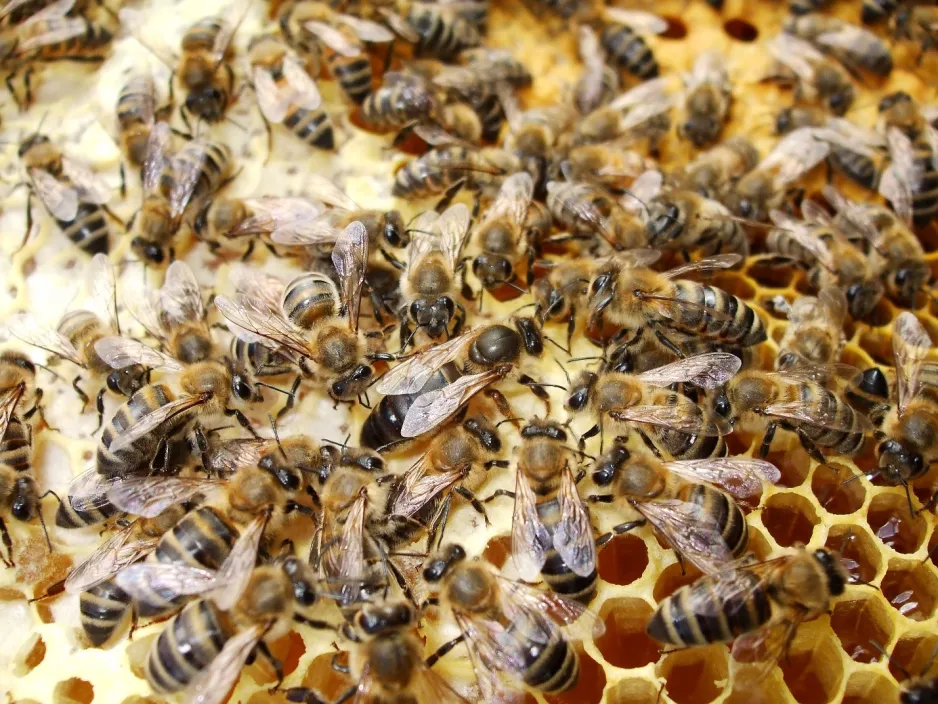
Ingenium Channel (IC): When did you start beekeeping?
Nadine Dagenais Dessaint (NDD): I started beekeeping almost a decade ago when I began working on the bee exhibition here at the museum; I was reading about honeybees and beekeeping to prepare for the exhibition. The more I read, the more interesting I thought it was. So I thought, “What the heck — I’m going to give it a try.” I purchased my first two colonies and I’ve been in love ever since.
What’s your favourite part of beekeeping?
There are so many good parts! Each time I go to the bee yard, I get a bit of a thrill. I’m always wondering what I’m going to discover. I always see things I’ve never seen before. It’s not me versus the bees because we’re partners. I go in to help them and, in exchange, I collect part of the honey.
They’re just so cute and adorable; I like moving the frames and looking at them, watching them dance. Some people like to watch cat videos and playing with their cat, to me it’s like playing with my bees. It’s a bit of a hobby and it’s a lot of fun. I could just sit in front of the hive and watch them go in and out.
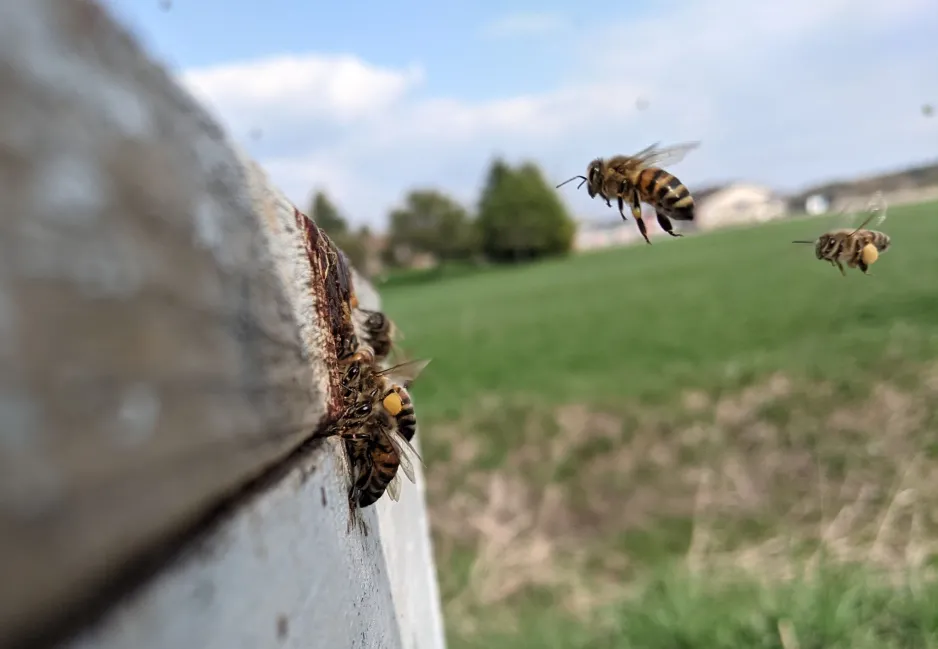
IC: When you decided to do it on your own, did you take training?
NDD: I took one course at Algonquin, but I think having read so much about beekeeping — I must have read more than a dozen books on the topic — I already had most of the knowledge I needed. I actually purchased my first two colonies before ever visiting a bee yard! I also had a circle of beekeepers that I could call, and I even knew a local bee inspector. During my first year of beekeeping, I dealt with chalkbrood disease — a fungal infection that turns bee larvae into a substance that looks very much like chalk. I remember calling the inspector for tips on how to deal with the disease.
IC: What kind of gear do you wear when checking on your hives?
NDD: I always wear a bee suit with a veil to protect myself from bee stings. I also wear gloves when the bees are very aggressive, but otherwise I prefer not to wear them. They make it difficult to lift frames or feel the bees. Without my gloves on, I can feel the bees under my fingers. If I am about to squash one, it usually sends me a message before stinging — it vibrates and buzzes. Believe me when I tell you that this is a warning that I take seriously!
IC: Do you worry about getting stung?
NDD: Not anymore. In my second year of beekeeping, I developed allergies to honeybee venom and had an anaphylactic reaction; my palms and scalp were itchy, my lips and tongue were swollen, and I had a rapid heartbeat. Because we get stung a lot, beekeepers often end up developing allergies to bee venom.
Fortunately, honeybee allergies are one of the easiest allergies to control. It is possible to be desensitized with bee venom injections at the allergist and build up tolerance over time — which is what I did.
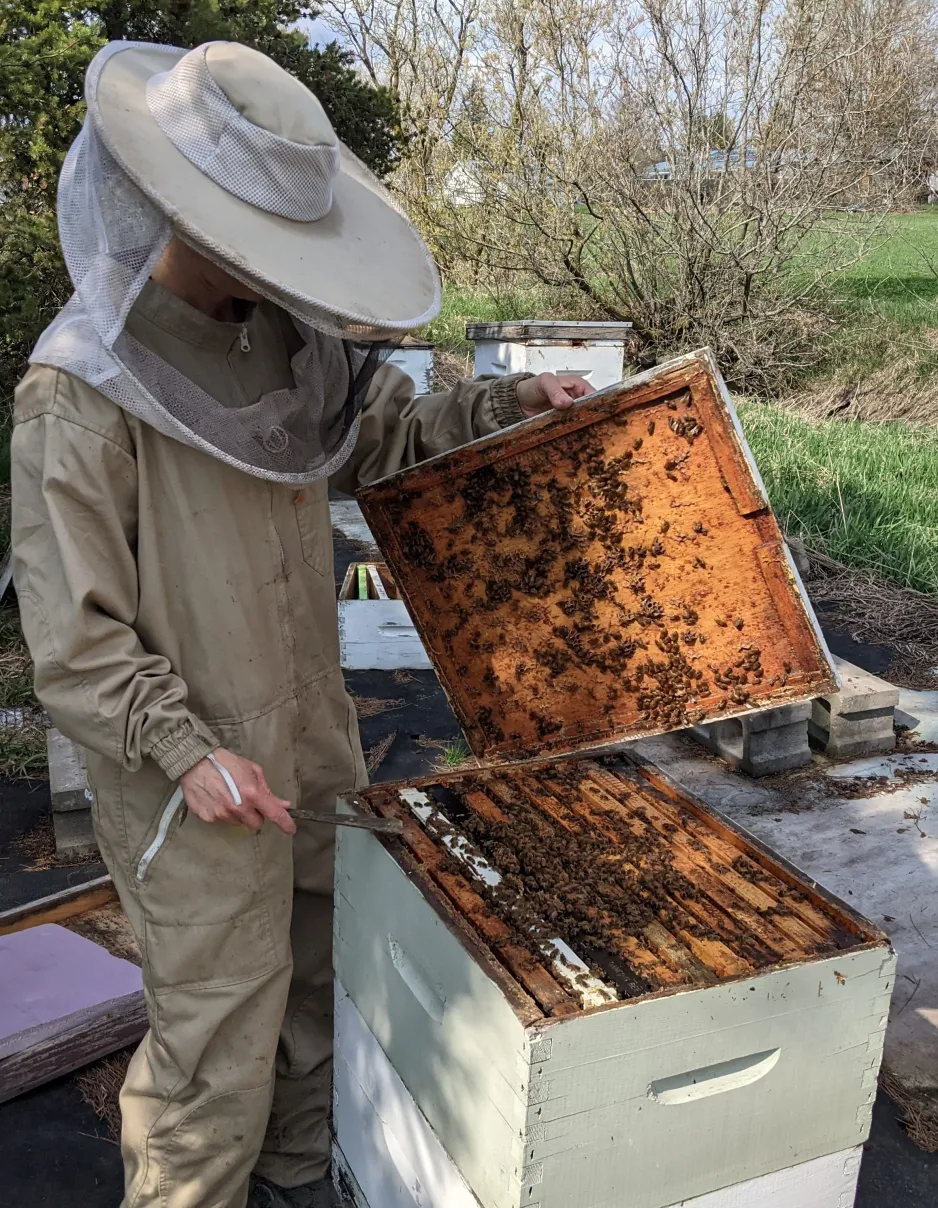
Now, I know I’m OK with five stings; that’s my threshold. I used to visit the bee yard dressed in shorts, a tank top with flip flops — I found it too hot in a bee suit — and I didn’t mind getting stung, but now I put my suit on. I’m not taking any more chances.
IC: What are the main responsibilities of the beekeeper?
NDD: In a nutshell, to keep the colonies healthy and thriving so that they can produce lots of honey and survive through the winter.
IC: How do you achieve that?
NDD: I visit my bee yard every second week, from March to October. In the spring, I make sure my colonies don’t run out of food — especially if it’s a cold, wet spring. I may supplement them with sugar water and treat them for diseases if they show signs of illnesses. As soon as the colonies are strong enough, usually around June, I start adding honey supers — the boxes where the bees store their surplus honey. If I wait too long, the colony may swarm. Swarming occurs when a hive becomes too congested — and the queen has no room to lay eggs. The workers will raise new queens and the old queen will leave with many of the workers, to start a new colony elsewhere. Swarming is natural for the bees — that’s how honeybee colonies multiply — but it’s not good us beekeepers. Colonies who swarm produce much less honey. So, to stop the bees from swarming, I add those honey supers as soon as they’re needed.
When I visit my bee yard, I may do a full inspection and pry apart the entire hive to check each and every frame. I do that once in a while if the bees behave suspiciously — like they are getting ready to swarm, have swarmed, are “queenless” or show signs of diseases or weaknesses. But usually I just lift the inner cover and peek inside the top honey super, to see if they need another box.
Those are the main duties until September, when I remove the last of the honey supers. Then my job is to make sure that the bees have enough food to survive the winter. I treat each colony to prevent diseases and insulate the hives before the weather gets too cold. Then it’s up to them.

IC: How does the workload compare with the other responsibilities of farm life?
NDD: Compared to other farm animals, honeybees don’t need much care. They don’t need to be fed or given water or cleaned daily. That said, they still require some care; they can get sick, they may lose their queen, need more space, or require feeding in early spring and late fall. Unless it’s winter — there’s nothing I can do for my bees in winter — I can’t just say, “Well, I’m going on holidays for a month.” From spring to fall, I need to visit by bee yard at least every second week.
There’s a lot of science and just general knowledge that someone has to know, in order to be a good beekeeper. The idea of, “I’m going to put a beehive in my backyard and it’s going to be wonderful and I’m just going to collect the honey,” is a little simplistic. It’s more complicated than that. You can do that for a year, but you probably won’t have bees the next year. The challenge is to keep them alive.
Physically speaking, it’s not for everyone. One honey super, when it’s full, weighs about 50 lbs. Think about it: I have to pick it up, and it’s covered with bees. I’ve found ways of working around it, but it’s ridiculously heavy. And many of the boxes have to be lifted above my head. So it can definitely be a back-breaking job at times. That’s when I need my husband or sons to help.
IC: Are the bees protective of the honey when you come to remove it?
NDD: It depends. If I collect honey in July, the bees are usually pretty laid back, they’re busy. They may not even notice me leaving with the honey supers.
Now at the end of August, it’s a different story. The bees become very aggressive and protective of their honey crop. They no longer want to share it. They will swarm the honey supers as soon as I remove them from the hives, and it’s very difficult the empty the boxes of bees. They know that the season is ending, and they become very protective of their crop.
Another factor during the second crop is wasps; there aren’t that many wasps earlier in the season. But by the end of the summer, wasp colonies are at the peak and they try to get into the beehives to steal honey. In return, the bees become more aggressive and protective. So that’s my least favourite part — collecting the honey boxes. That’s when I get stung the most.
IC: What can the average person do to help the honeybees?
NDD: All bees are having a hard time, especially native bees like the bumblebee and the mason bee.
If you want to help the bees — all bees — then provide them with food. Let dandelion, clover, creeping Charlie, and goldenrod grow in your lawn or on your property. Choose flowers that produce nectar and pollen. I was surprised to learn that many varieties of sunflowers do not produce pollen. These plants are of no use to bees.
You can also buy local honey! It helps local beekeepers like me take care of our bees — and the honeybees pollinate the plants in your area, which is good for biodiversity.


